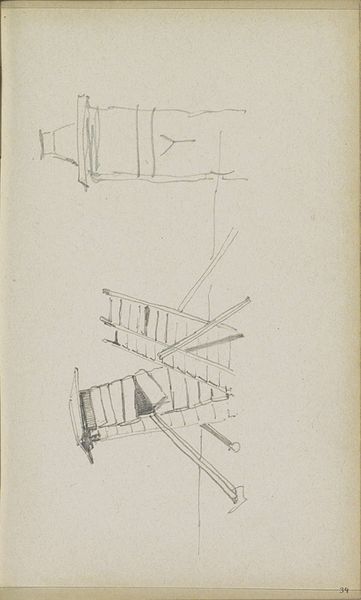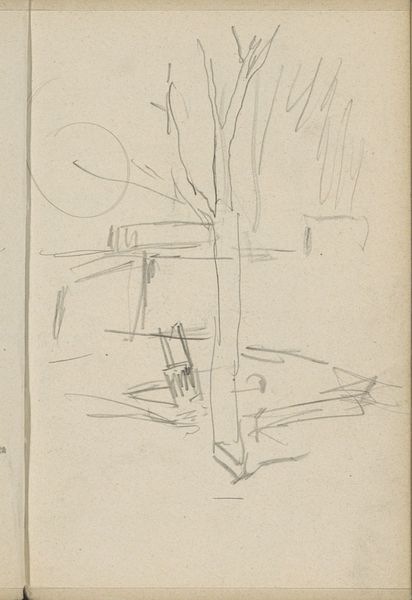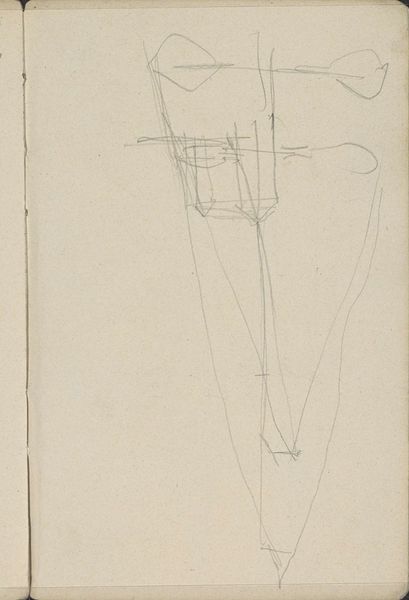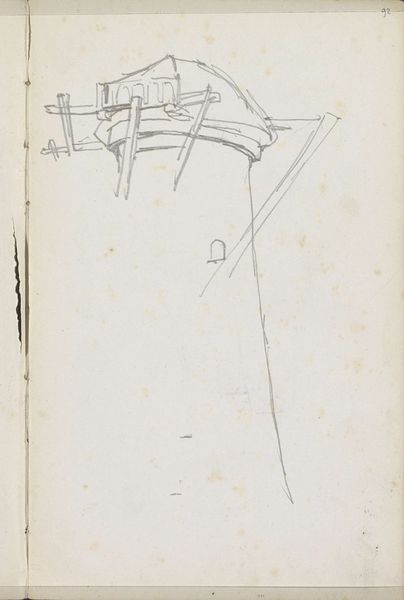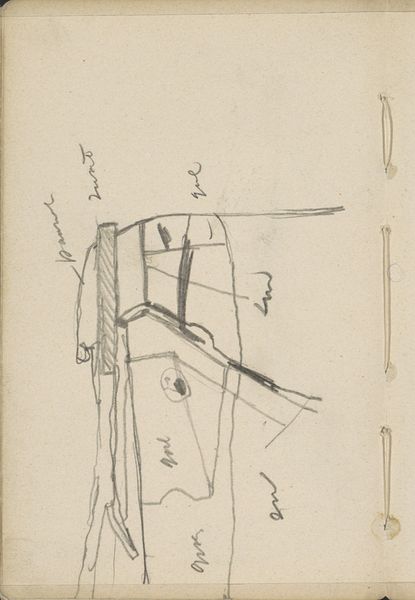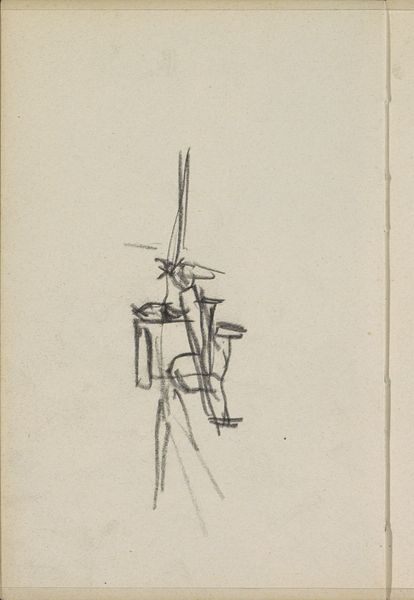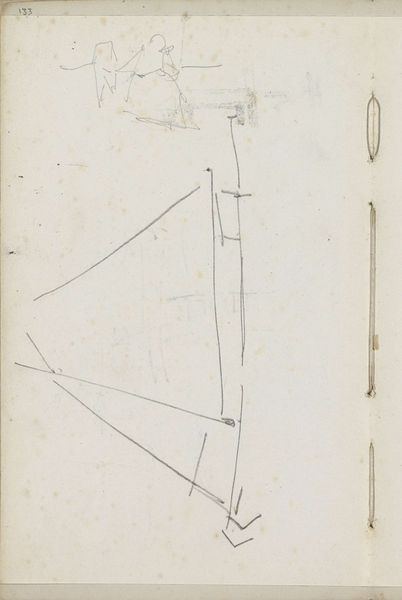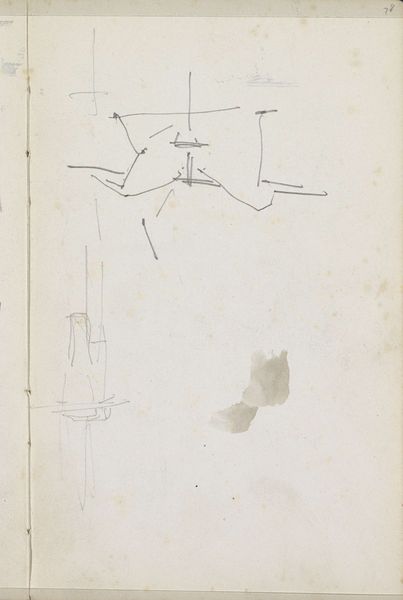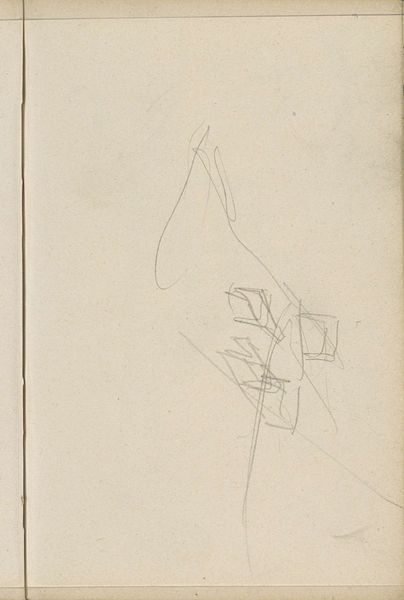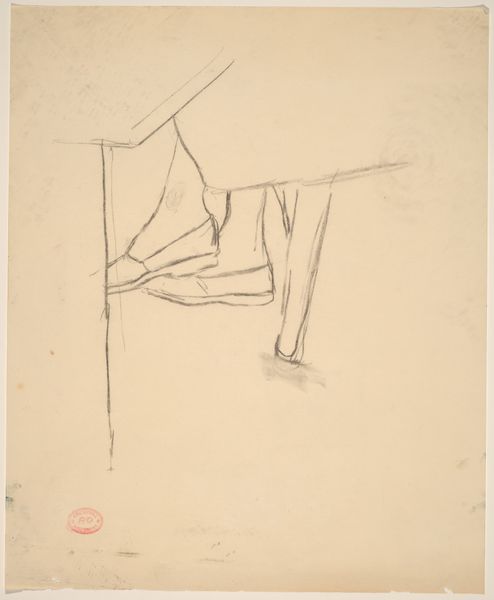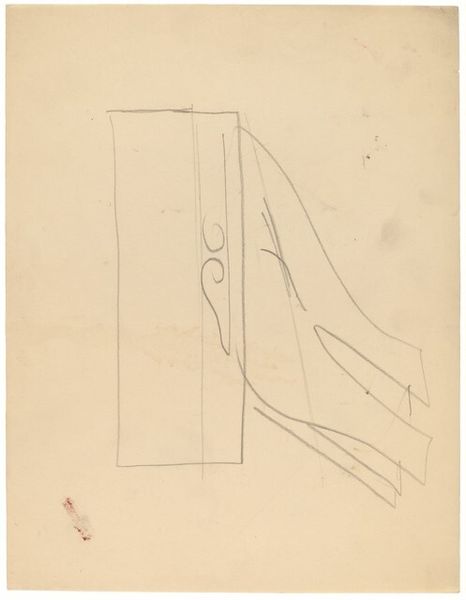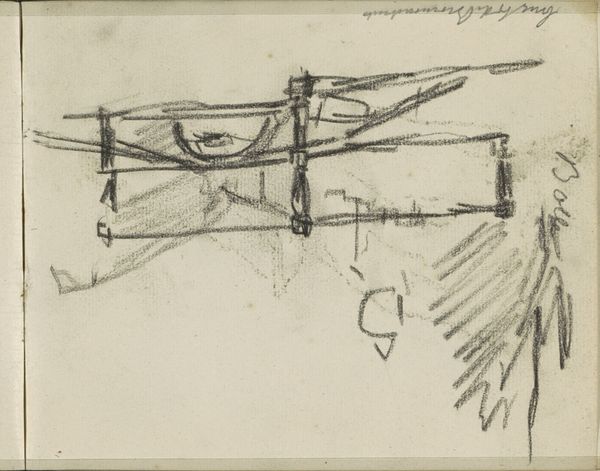
drawing, paper, pencil
#
drawing
#
amateur sketch
#
light pencil work
#
pencil sketch
#
incomplete sketchy
#
landscape
#
paper
#
personal sketchbook
#
idea generation sketch
#
ink drawing experimentation
#
pen-ink sketch
#
pencil
#
abstraction
#
sketchbook drawing
#
initial sketch
Copyright: Rijks Museum: Open Domain
Curator: Here we have "Vlag aan een mast," or "Flag on a Mast," a pencil drawing by Cornelis Vreedenburgh, likely made sometime between 1890 and 1946, and housed right here in the Rijksmuseum. Editor: Ah, the raw energy of a first draft! You know, it feels less like a triumphant flag and more like a surrender flag, almost deconstructed, like it’s barely clinging to the mast. Makes you wonder what kind of statement Vreedenburgh was pondering. Curator: That's a fascinating take. I'm interested in the political connotations flags hold. During the periods Vreedenburgh was active, the Netherlands experienced significant shifts—two World Wars, for instance— that flags were a crucial form of symbolic representation, shaping national identity, expressing political affiliations, or serving as rallying points during wartime. It makes this preliminary drawing all the more curious. Editor: True, but even flags surrender eventually, don't they? I get this strong sense of transience and incompleteness. Like it's a half-formed memory struggling to materialize. Maybe it was less about grand gestures and more about capturing a fleeting feeling. It really echoes with me today… that sketchy feeling. Curator: It could be a study for a larger, more resolved work. I wonder how Vreedenburgh's involvement in various artist societies influenced his artistic perspective, as these groups served as platforms for exchanging ideas and shaping the artistic landscape of the time. What discussions was he engaging in? How did those dialogues shape the politics of his imagery? Editor: Or maybe it was just a doodle during a boring meeting, which is perfectly fine by me. Either way, its appeal comes from its simplicity. It reminds me that not every idea needs to be perfectly formed to resonate, or have any kind of deeper historical context! Sometimes it’s enough just to capture the essence of something. Curator: Indeed. The beauty of accessing preliminary sketches is seeing the process behind it and making inferences, so each viewer finds their own connection between a work and a place within a larger historical context. Editor: Right. Thanks for that bit of insight; you nudged me to remember the stories and the weight behind something that looked like it came to him with little effort. That is worth pausing to think about.
Comments
No comments
Be the first to comment and join the conversation on the ultimate creative platform.

